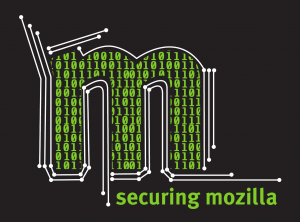Security/Risk management
|
STATUS: READY The goal of this document is to help understanding how risk is handled by the Enterprise Information Security Team (Infosec) at Mozilla. The main goal is to strike a balance between speed and effectiveness while assessing risk for decentralized teams and projects. The Enterprise Information Security Team (Infosec) maintains this document as a reference guide for security engineers and anyone interested in following our risk management processes. Updates to this page should be submitted to the source repository on github. Changes are detailed in the commit history. |
Risk Management
Preample
What is Risk?
Risk is the combination of the probable frequency and probable magnitude of future loss. It is made of 2 components:
| Impact (magnitude of future loss) | How does it affect our productivity, how much does it cost us, will negative media tarnish our image, how does it affect users' privacy, etc.? |
| Probability (frequency of future loss) | How likely is it to happen? |
Also represented as Risk = Impact * Probability
Note:Often, impact is the primary driver of risk even though the probability may be low. This is because impact is easier to quantify and measure.
We usually also call impact the "probable impact". A probable impact is a reasonable "worst case scenario".
If the situation is so remote we think the probability is already null, then this is not a probable impact.
Standardized Levels
We measure risk, impact, probability, etc. based on a simple 4 levels scale [Risk_Management:Standard levels]. We use this to normalize risk measurements. Here's a summary on how it applies to risk.
| LOW | Low is something we don't expect has impact, or is likely to happen. We don't expect much attention there. |
| MEDIUM | Medium is where some risk exists and should at least be acknowledged by service owners. Ideally, steps will be taken
to remedy or mitigate the risk albeit some may instead accept this as residual risk. |
| HIGH | High means we have a problem that we have to fix. The risk is sufficiently important that we have to plan remediations
or mitigations soon. We do not expect high risk to be accepted as residual. |
| MAXIMUM | Maximum means we have a significant problem right now. All hands on deck may be required to remedy or mitigate the
risk immediately. |
Risk Measurement
Risk can be measured in two ways:
Quantifiable risk
Risk we can precisely measure and record with numbers:
- How many security controls are present?
- Is the control strength rated?
- How many attacks per day do we see?
- How many times did this happen in the past?
- How many vulnerabilities exist?
- etc.
Qualifiable risk
Risk we have an idea about but can't accurately measure and is thus subjective.
- How confident are we with the code-base?
- Do we think the project has had sufficient review?
- Do we think this control is efficient?
- etc.
The more quantifiable data we gather, the more accurate the risk measurement and thus the easier and clearer decisions can be for service owners. We call the data we gather data points.
Note: Recorded risk is always associated to services.
Risk records (Security controls and capabilities)
Risk records are list of security controls a service have or is lacking and their measure of effectiveness for a given service. The higher the impact tied to a service, the more effective the security controls have to be. This ensure a lower likelihood that the service will ever suffer the impact recorded, and thus lowers the service risk. It also list the service risk assessed by an RRA, including impact and likelihood to different components.
Security controls are categorized by capability ("Inventory", "Vulnerability remediation", "Access control", "Data recovery", etc.). This allows to also understand which security capabilities a service offers.
- Current Capabilities Status: https://docs.google.com/spreadsheets/d/1qnjdWJiOleTLvWyeiW65gwnuElyRlMMIvvlFAnpPy3M/edit#gid=1307966807
- Open Risk Records: https://mzl.la/1EmxXSU
- Closed Risk Records: https://mzl.la/1EmxVdY
Impact data point
The Rapid Risk Assessment is currently the single data point for impact and is fairly reliable and accurate for that measurement.
- Quantifiable results: Normalized financial impact, productivity impact.
- Qualifiable results: Normalized reputation impact.
- Not recorded: legal impact.
Probability data points
| Data point | Description & comments | Storage method | Normalized results available | Quantifiable results | Qualifiable results |
|---|---|---|---|---|---|
| Rapid Risk Assessment | The likelihood recorded by the RRA is a best-effort metric that is gathered by asking standard questions. It generally
catches high/maximum likelihood scenarios well, but is not accurate for medium/low scenarios. (i.e. an RRA low likelihood may in fact be higher than estimated) |
|
Yes. | None. |
|
| Vulnerability data | Scanning results from the vulnerability management software. It is difficult to assess exposure through this mean. An
infrasec system user needs to be present. This also includes non-system vulnerabilities such as web application vulnerabilities. |
|
Yes. |
|
None. |
| System policy compliance | System compliance such as "use SSH keys", etc. is checked and recorded by MIG.
mig-agent must be installed on systems. |
|
Yes. |
security level. |
None. |
| Bugzilla service bugs | Not yet implemented. | ||||
| Exposure data | Not yet implemented. | ||||
| Attacker alerts | NSM and MozDef issue alerts on service attacks. This includes data from threat-exchange type platforms. |
|
No. |
|
|
Reference documents
- http://riskmanagementinsight.com/media/documents/FAIR_Introduction.pdf (Introduction to modern risk analysis)
- http://www.iso.org/iso/home/standards/iso31000.htm
- https://en.wikipedia.org/wiki/ISO/IEC_27001
- http://www.ssi.gouv.fr/guide/ebios-2010-expression-des-besoins-et-identification-des-objectifs-de-securite/
- https://www.sans.org/critical-security-controls/controls (version 5)

